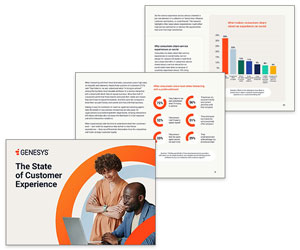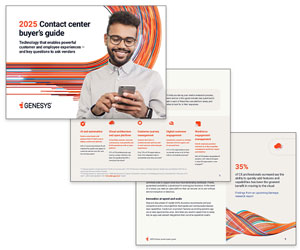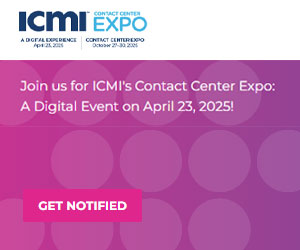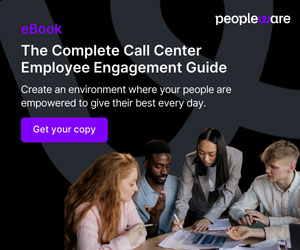The pressures to deliver on today’s customer expectations are intense. Customers expect seamless service journeys, no matter how many people, channels or departments are involved. And they’ll quickly shift to your competitors when their expectations go unmet.
In the contact centre, workforce turnover is high, draining knowledge and the investments your business has made in hiring and training staff.
And while yesterday’s point solutions for supporting your workforce were quick and easy to acquire, they’re now proving difficult to weave together into a comprehensive, connected tech stack.
Customer service teams tie these manual processes and siloed technologies together themselves, leading to frustrating and time-consuming experiences for both your customers and employees.
This inefficient “human middleware” approach contributes to poor customer experiences (CX) – and can cost your organisation money.
Last year, Genesys announced a new strategic partnership with ServiceNow to explore how our companies and platforms could come together to solve these challenges.
And, as Olivier Jouve, Chief Product Officer at Genesys, noted, “Bringing our platforms closer together will give our customers choice and flexibility as they work to elevate their customer and employee experiences.”
Here we examine the 3 key elements that will help you deliver the unified experience your customers and employees expect.
1. Centralise Interaction and Work Routing
Deploying multiple systems to route and manage different channels and other systems entirely to assign and automate work across middle- and back-office teams can negatively affect not only your ability to deliver world-class service, but also your bottom line.
Customers are often forced to repeat themselves when they switch communication channels. Frontline agents receive work that doesn’t always align to their skillsets, and they must shift through multiple applications to gather information.
This can only add to their frustration. The business is left with redundant tech systems that must be constantly maintained to keep operational – raising IT budgets year after year.
2. Unify Teams on a Single Desktop
The CX and customer relationship management (CRM) industries have been discussing the concept of a “single pane of glass” for years, if not decades.
Yet, many companies still require their agents, supervisors and subject matter experts to operate across separate, disconnected applications to communicate with customers and complete tasks to resolve their issues. This introduces costly human middleware to your CX processes.
While humans are still a crucial component to providing empathetic customer service, they simply cannot do their jobs effectively while also bridging the gap between data, channels and workflows.
This can negatively impact every contact centre KPI – from average handle time to customer satisfaction scores to agent retention (more on this later).
3. Optimise Workforce Engagement
According to SQM Group research, the call centre industry’s annual agent turnover rate has risen to 38% in 2022.
Mike Desmarais, founder and CEO of SQM Group notes, “As a result of the higher agent turnover, job burnout, absenteeism, operating cost, and lower [first call resolution] FCR and [customer satisfaction score] CSAT, you can strongly argue that call centre turnover is the most important KPI.”
New agents struggle to resolve interactions and cases on first contact. Even the most seasoned agents require the necessary tools and continuous professional development to become top performers.
It can be nearly impossible to deliver a unified experience to customers with an inconsistent, ill-equipped workforce that doesn’t own and value their careers.
And, when support teams receive the right type and amount of work and lean on AI-assistance and workflow automation to make their jobs easier, both employee satisfaction and customer satisfaction can improve.
Watch this demo to learn more about how Unified Experience from Genesys and ServiceNow can help you increase workforce productivity, boost customer loyalty and reduce total cost of ownership (TCO).
To find out more read the product overview.
This blog post has been re-published by kind permission of Genesys – View the Original Article
For more information about Genesys - visit the Genesys Website
Author: Genesys
Reviewed by: Jo Robinson
Published On: 21st Apr 2025
Read more about - Industry News, Genesys




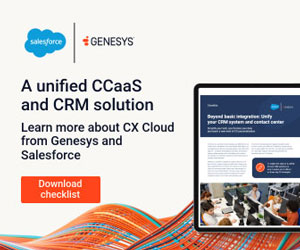

 Genesys empowers more than 8,000 organisations in over 100 countries to improve loyalty and business outcomes by creating the best experiences for their customers and employees. Through Genesys Cloud, the AI-Powered Experience Orchestration platform, Genesys delivers the future of CX to organisations of all sizes so they can provide empathetic, personalised experience at scale. As the trusted platform that is born in the cloud, Genesys Cloud helps organisations accelerate growth by enabling them to differentiate with the right customer experience at the right time, while driving stronger workforce engagement, efficiency and operational improvements.
Genesys empowers more than 8,000 organisations in over 100 countries to improve loyalty and business outcomes by creating the best experiences for their customers and employees. Through Genesys Cloud, the AI-Powered Experience Orchestration platform, Genesys delivers the future of CX to organisations of all sizes so they can provide empathetic, personalised experience at scale. As the trusted platform that is born in the cloud, Genesys Cloud helps organisations accelerate growth by enabling them to differentiate with the right customer experience at the right time, while driving stronger workforce engagement, efficiency and operational improvements. 




